How to Insert AI Agents in your Organization?

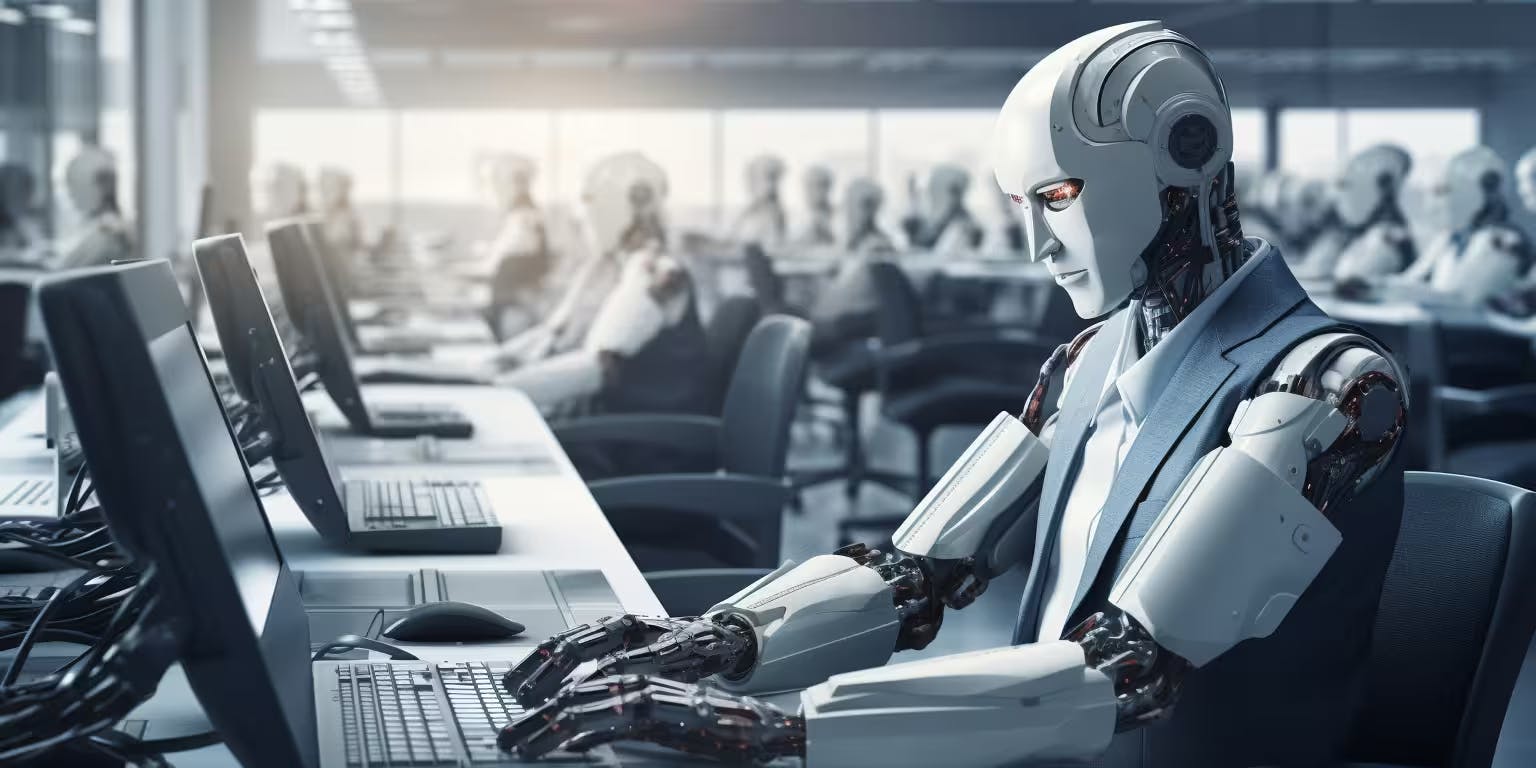

The other day, a customer asked us:
Who is responsible for an AI Customer Support Agent, the head of CX, or the CTO?
The Head of CX will need to understand deeply about prompt-engineering, semantic search, persistent memory and how to best organize the different AIs into delivering a great customer experience. On the other hand, the CTO might be more familiar with those topics, but he is not familiar at all with the customer experience and the customer expectations. Clearly, neither answer seems satisfactory. Why is that?
The Default has always been HUMAN Organizations
Organizational structures have been constructed around the premise that only humans can execute tasks with intelligence. Consequently:
- Managers have a set number of reports, given human limitations of managing other humans effectively (8 max according to some)
- One-on-one meetings to build trust and alignment
- Performance reviews and salary hikes keep employees motivated.
- Job roles, hiring, and terminations refine the workforce.
In the realm of AI, these paradigms become obsolete. AI doesn’t have feelings or information overload; it can scale indefinitely, often more cost-effectively than humans.
However, current organizational structures are not prepared for this sort of intelligent workforce, explaining in some ways the slower-than-expected adoption rates of AI.
Cross-Intelligent Organizations
At Patagon.AI, we coined the term “cross-intelligent organizations” to describe entities that effectively harness both human and artificial intelligence. This evolution parallels the rise of cross-functional departments in the Agile era. Only this time, instead of multiple departments working together, we have multitple types of intelligence. We anticipate that in the foreseeable future, at least 50% of business processes will be AI-driven.
To maximize the capabilities of both human and AI, we must re-imagine our organizational blueprints. The goal is to transition from human-centric hierarchies to loosely coupled, autonomous sub-systems that encapsulate the type of intelligence operating inside it. This encapsulation allows you to slowly incorporate more artificial intelligence in a safe maneer and based on actual impact. Slowly paving the way to cross-intelligent organizations.
The Organizational Spear
Reimagining an organization, from a hierarchy of humans into a collection of sub-systems, starts with the customer. The entire organization's main goal is to serve customers and help them achieve their goals. The customer journey serves as the backbone of the entire organizational structure. Think of like a spear. Every subsystem perfectly aligned behind the customer journey, helping them achieve progress. Each of these systems hides away how they work internally, if it's with natural or artificial intelligence. It's the responsibility of the CEO to ensure the ICP and the Customer Journey are defined and communicated to the entire company.
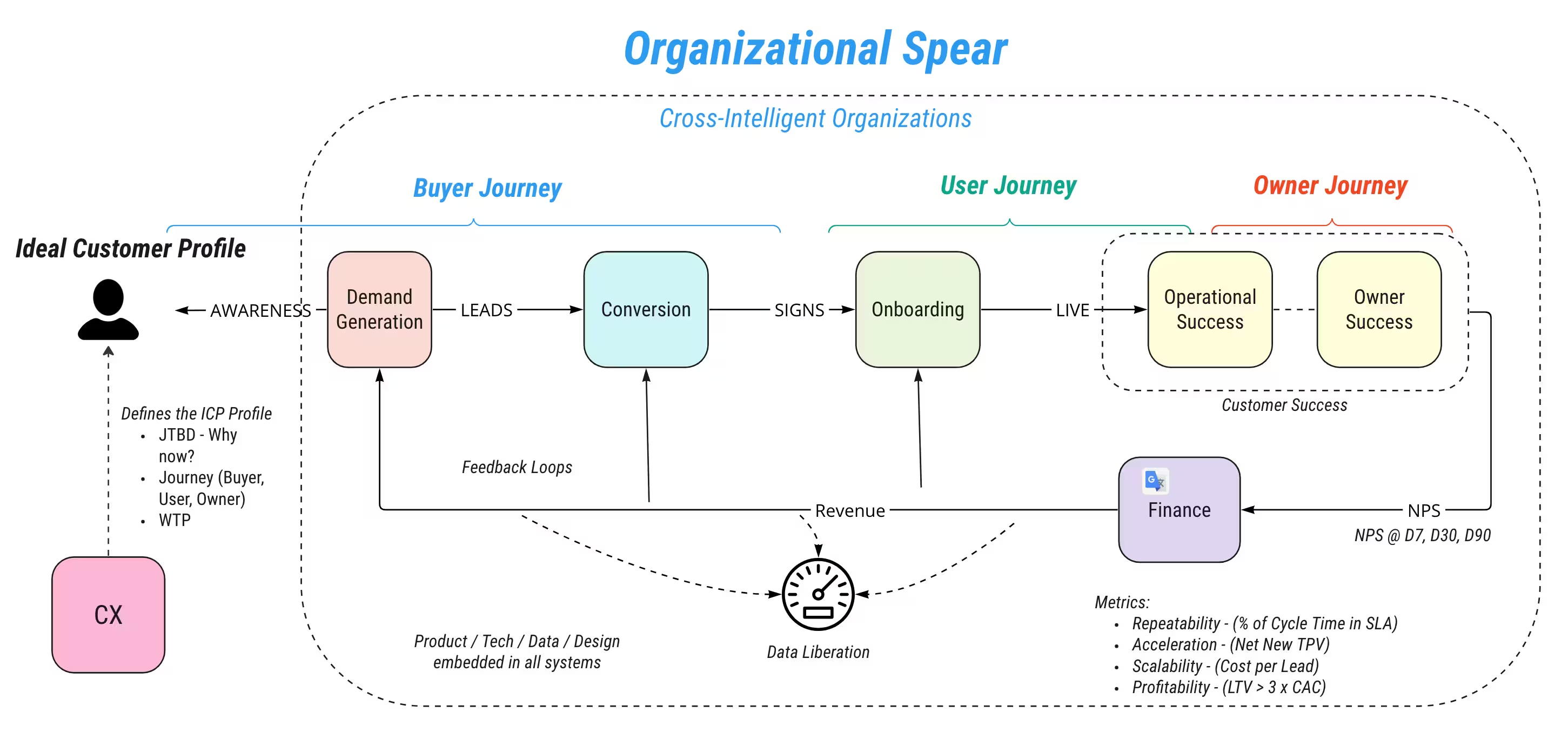
Systems are just Black Boxes
Instead of traditional departments, think of “systems” as black boxes - cross-functional, cross-intelligent units tasked with specific goals. For instance, the Demand Generation system generates leads, while the Conversion System turns leads into sales. Every system requires a clear leader responsible for the performance of each system. They are in charge of getting the resources and teams necessary to deliver the goal. While in the past, these were usually cross-functional teams, or tribes or cells, we are expanding that definition to take ti beyond just functions, to different intelligence types. We believe that in 5-10 years, Managers that don't know how to design Agents will be similar to managers today not knowing how to use internet browsers.
Raising Agents
An "Agent", as defined at Patagon.AI, is an orchestra of multiple AIs working together. They also have memory and semantic search capabilities, which allows them to expand their knowledge indefinitely. In many ways, they are similar to raising children, you have to teach them step by step in order to build more complex and emergent behavior. Each agent does one task only really well, and you make them work as a team, capable of delivering incredible experiences. Agents are not deterministic so you must constantly monitor and polish the reasoning and rules in order to achieve a truly great experience. We have worked with several companies that got started quickly, and then proceeded to refine their agents on their own, in order to achieve the desired results in terms of quality and performance.
But, what is an Agent?
Most are familiar with ChatGPT, where customers pose questions, and get answers.
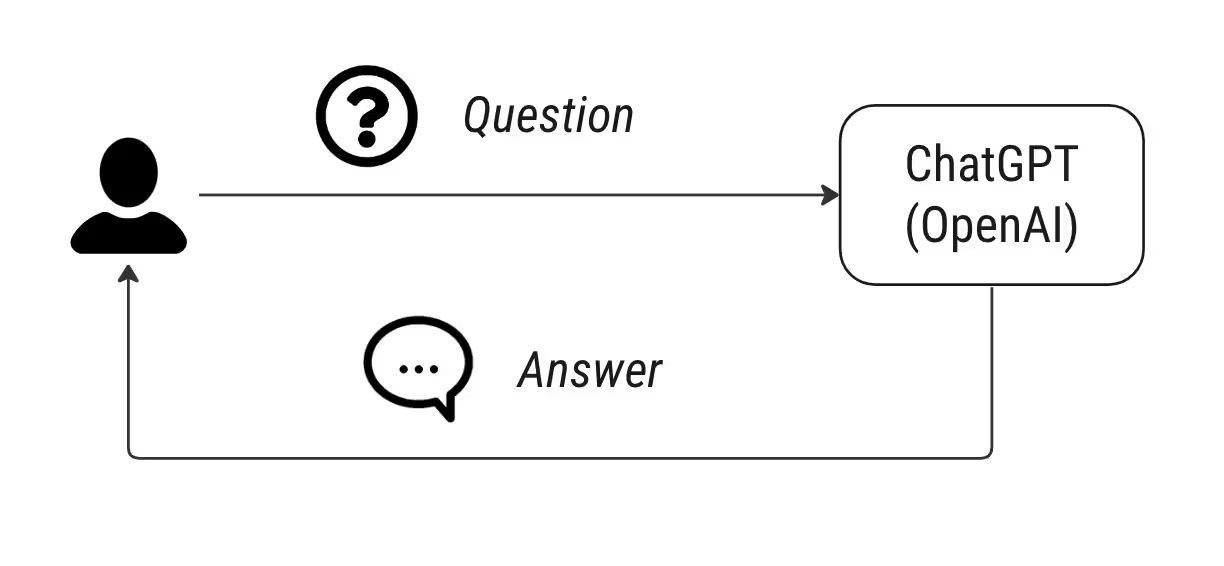
Simple right?
However, there is more beneath the surface: the System Prompt and the Message History
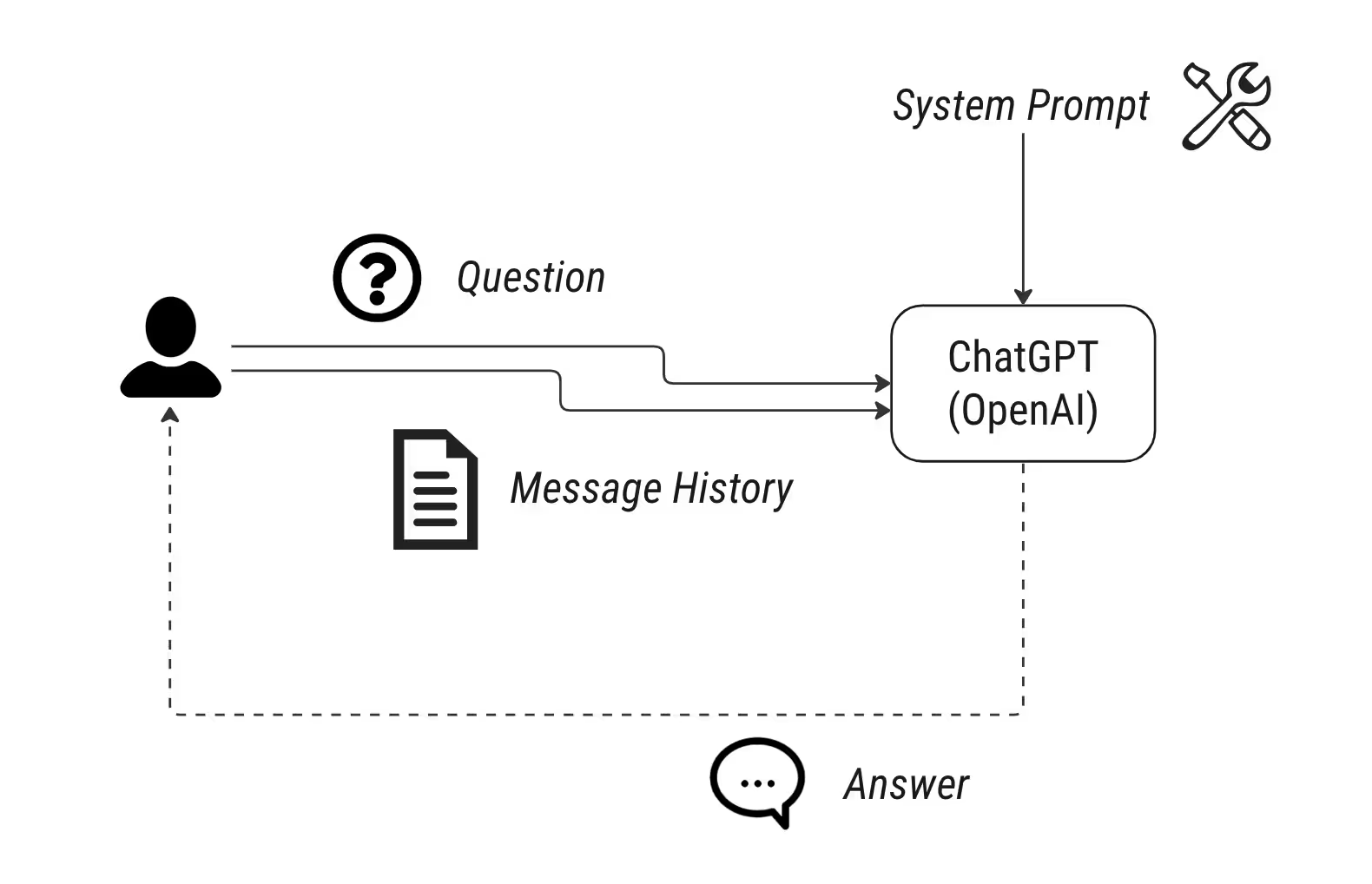
The System Prompt defines the role of Large Language Model (LLM). Examples are:
- “You are DoctorAI, an AI designed to help patients understand… “
or
- “You are Patagon.AI, a sales agent designed to help customers choose to work with our consulting firm. You are professional, keep your answers short and brief, and you….”.
The Message History is a list that logs the entire conversation:
- User: “What is Patagon.AI?”
- Assistant: “Patagon.AI is a consulting firm…”
- User: “How much does it cost?”
- Assitant:”Our cost is…”
LLMs are stateless. This is powerful because any part of a conversation can be replicated using the 3 parameters (Question, Message History and System Prompt). This flexibility paves the way for creating diverse agent interactions.
In essence, thats an Agent!
Combining Agents: The Observe/Decide/Act Pattern (ODA)
Patagon.AI draws inspiration from military theory and strategy, particularly the OODA loop (Observe, Orient, Decide, Act). We simplified it into the ODA pattern:
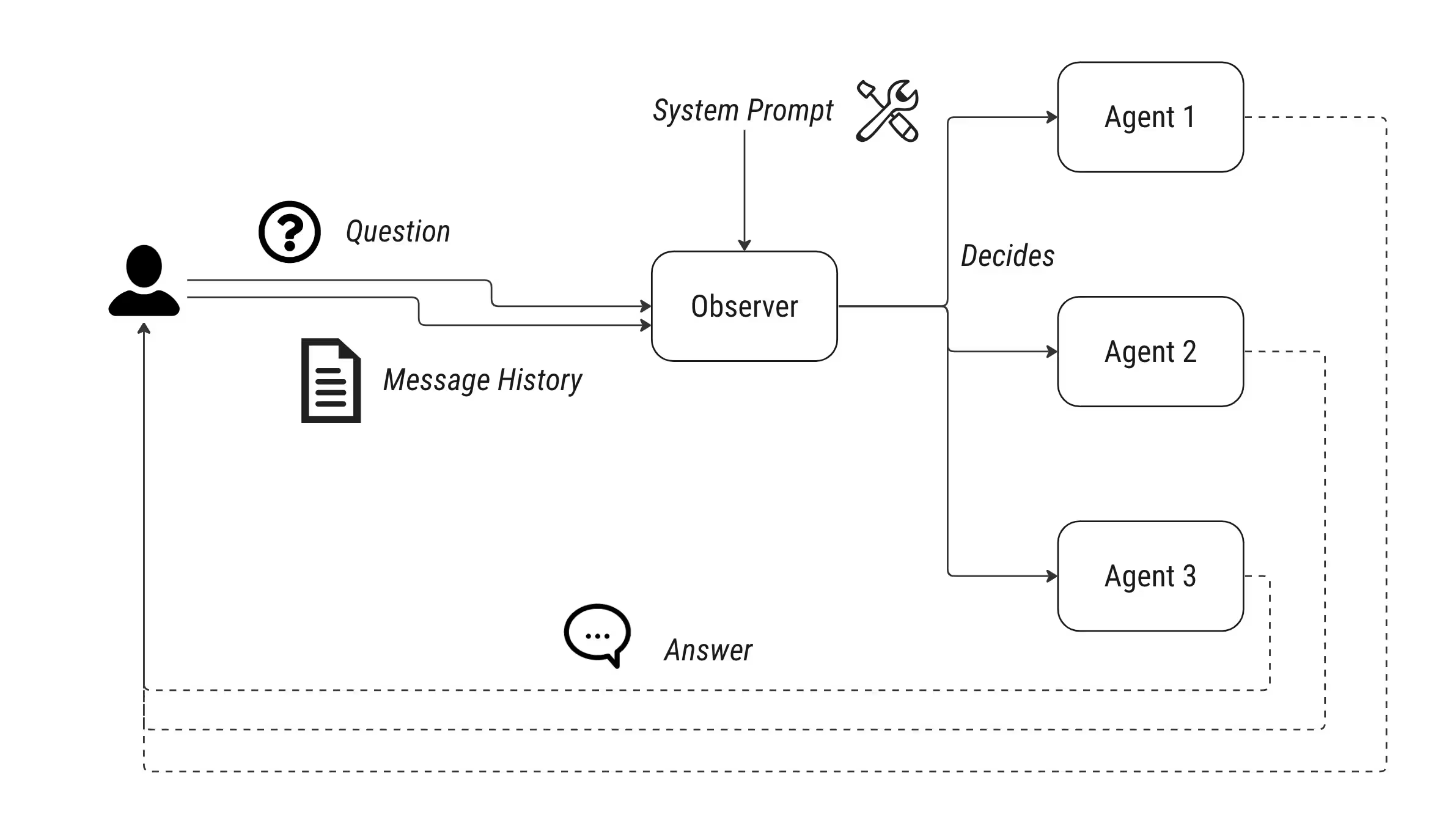
The Observer is an Inference Engine. It leverages the LLM to grasp the conversation context. Its role is solely to discern the conversation's flow and then decide the next steps based on inferences. A typical system prompt for the Observer could be:
System Prompt: “You are an Observer of a Sales Conversation. Your job is to understand in what section of the conversation we are in. Return your response in the format, state/reason. State means what is the state, we are in, and reason is WHY you chose what you did. If you are unsure, just return unsure. The possible sections are:
Introduction - Customer is getting to know our product
Pricing: Customer wants to know more about pricing
Meeting: Customer wants to move forward scheduling a meeting…”
The observer, thus, informs you of the conversation's status. From there, directing the customer's queries to appropriate Agents becomes seamless. With each interaction providing complete context, connecting various Agents is a joy.
If you were doing your own CS agent, you could have an agent per product line. You could have an agent for different use cases. You might even connect to external services, like semantic search, Zendesk, Google calendar or whatever you like. This modular approach allows you to evolve your Agent into more and more a capable model. And the best part, is that your customer has no idea of the orchestra of agents in the background, working together to deliver this incredible symphony of customer experience.
Even though the investment might seem significant, once the agent is operational, it’s an incredible leverage. Cross-intelligent teams are able to scale at will, with marginal cost. They can monitor every interaction and learn from every decision. Imagine if you could see exactly the entire line of thought of your customer service agents, and how they responded, and they can learn in real time from new information you make available in the database? It is really that powerful.
Today you can find several tools that can help you launch Chat type interfaces immediately: like stack-ai.com and botpress.com. However, the cost is significant. If you were to build your own bots, you would pay up to 8000X less if you went straight to OpenAI.
Agents and Humans together
Once you have your agents working for you, its actually pretty simple to understand how to segment work. AIs are best suited as being the first line of defense. Talking to customers quickly and giving them what they need. Humans on the other hand supervise these efforts, and continously fine tune the agents to improve the experience. You will need less humans that only execute tasks repetitively, and you will use more and more agent designers that also understand customer support really well to create this powerful workforce that helps customers.
In Conclusion
Who then oversees AI in Customer Support? The answer is indeed neither. In cross-intelligent organizations, we will have to abstract away the Customer Support behind a system. This System will have AI and natural intelligence. The Cross-Intelligent leader of Customer Support will be someone that deeply understands the customer experience, but also is capable of fine-tuning and evolving the Agents they will need to scale their operations and become more efficient. While this might sound futuristic, this is already the reality of many companies that are deploying their own agents. At Patagon.AI, we’ve successfully helped companies deploy these sort of solutions, and we believe this will become more and more the norm. Companies that adopt these technologies will achieve incredible benefits in speed, efficiency and scale vs others that don't, and this gap will only get bigger with time.